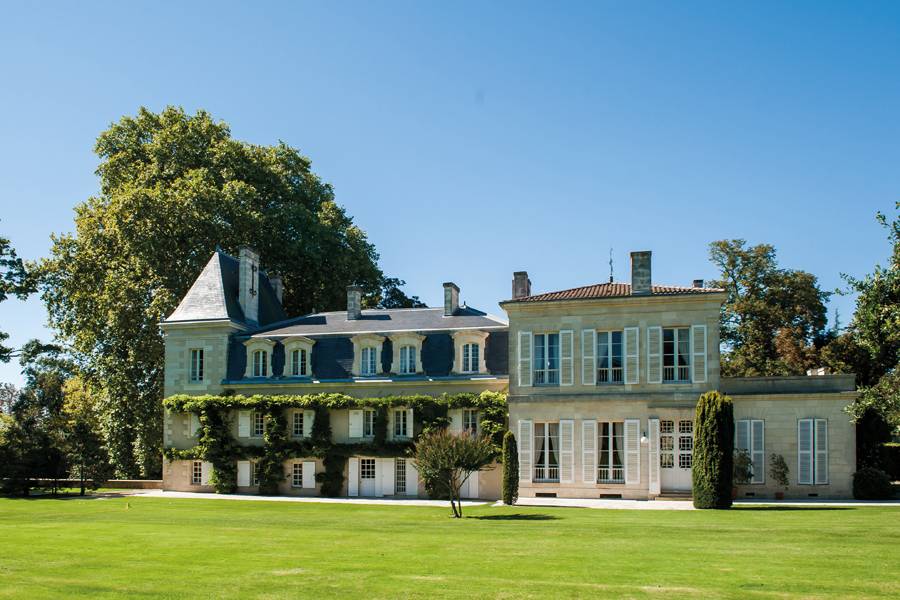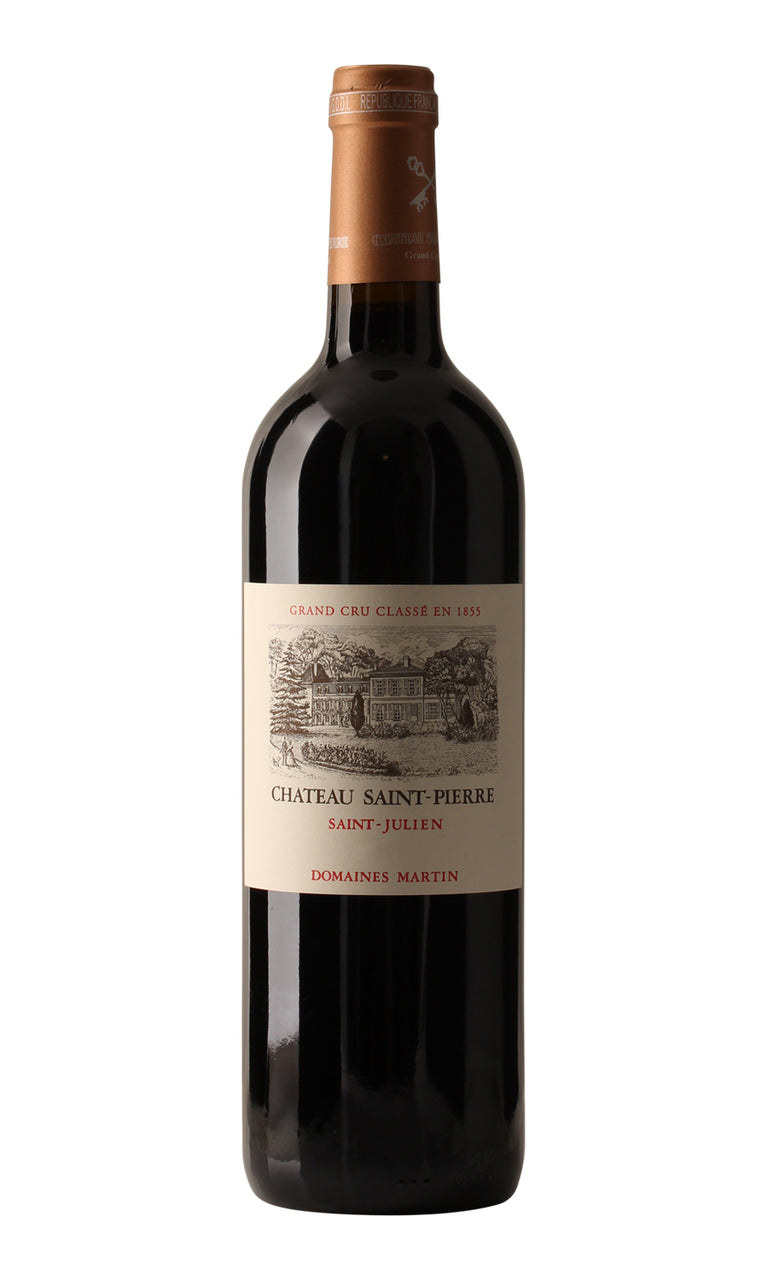- Colour Red
- Producer Château St-Pierre
- Region St Julien
- Drinking 2020 - 2045
- Case size 12x75cl
- Available
2009 - Ch St Pierre 4ème Cru St Julien - 12x75cl
- Colour Red
- Producer Château St-Pierre
- Region St Julien
- Drinking 2020 - 2045
- Case size 12x75cl
- Available
No further quantities available
Go To CheckoutNeed help? Call +44 (0)20 7793 7900 or email wine@goedhuiswaddesdon.com.
-
Goedhuis, April 2010, Score: 91-94
The 2009 St Pierre is shy on the nose but presides confidently over its palate with a noble frame of fruit, power and freshness. Firm and serious yet ripe, this wine has more of a 2005 feel than 2009. This has lots of potential for those who are willing to investigate this lesser known château.
-
Neal Martin, March 2019, Score: 96
The 2009 Saint-Pierre knocks the ball out of the park. It is a stunning Saint-Julien that has blossomed in recent years. I must confess that none of the previous bottles intimated the potential shown here. It is more compact, tighter on the nose than its peers, opening seductively with gorgeous graphite and bayleaf infused black fruit, real mineralité and great tension. The palate is medium-bodied with supple tannin, juicy to the point where it belies the backbone, very nicely poised with a precise and long graphite finish. Ducru-Beacaillou and Léoville Las-Cases - here is your challenger to the crown. Tasted blind at Farr Vintners’ 2009 Bordeaux tasting. 2022-2050
-
Robert Parker, February 2012, Score: 98
The all-time greatest wine I have ever tasted from Saint-Pierre, this estate, the smallest of the grand cru classes of St.-Julien, has an opaque purple color and a spectacular nose of subtle charcoal, creme de cassis, blackberry, and incense. Full-bodied, with striking intensity and flamboyantly rich, exuberant flavors bursting with extract, the St. Pierre has no hard edges, but rather massive, incredibly well-endowed blockbuster style, which should prove to be monumental. Give it 6-8 years to take on more definition and calm down, but this is a 30- to 40-year wine. Bravo! Drink: 2018 - 2058
-
Robert Parker, April 2010, Score: 94-98
This has been a fabulous wine over recent vintages, but I do not think many consumers have caught on. Of course, there is far less of this classified-growth St.-Julien than of any of the Leovilles, Beychevelle, Talbot, Gruaud Larose, or Branaire Ducru. Unbelievably powerful, rich, and impressive, this may be the finest St.-Pierre ever made. An inky/purple color is followed by notes of creme de cassis, spring flowers, and forest floor, a layered, full-bodied, powerful mouthfeel, perfect balance, and extraordinary richness, purity, and unctuosity. This great St.-Julien should hit its peak in 7-10 years, and last for 30-50. Bravo! Drink: 2017 - 2067
-
Decanter, April 2010, Score: 17.5
Black red, elegantly concentrated blackcurrant fruit, quite leafy and lifted with a touch of licquorice spice, both floral and a little exotic, lovely rich, ripe fruit and good future. Drink 2015-25.
-
Wine Spectator, April 2010, Score: 91-94
Sultanas and subtle spices on the nose. Full-bodied, with chewy tannins and excellent fruit concentration. Long and succulent. Stylish stuff.
Producer
Château St-Pierre
Being the smallest château in St Julien of only 17 hectares St Pierre can often be overlooked. It is squeezed between the two largest châteaux of Lagrange and Talbot, properties which have vineyard holdings of 113 and 107 hectares respectively-the largest in all of the Médoc. However with just one taste, one can tell that they have some of the best terroir of the appellation. Dating back to the 17th century, St Pierre took ...Read more
Being the smallest château in St Julien of only 17 hectares St Pierre can often be overlooked. It is squeezed between the two largest châteaux of Lagrange and Talbot, properties which have vineyard holdings of 113 and 107 hectares respectively-the largest in all of the Médoc. However with just one taste, one can tell that they have some of the best terroir of the appellation. Dating back to the 17th century, St Pierre took its name from the 18th century from its then owner, Baron de St Pierre. After multiple metamorphoses, it ended up in 1982 in the hands of Henri Martin, the previous manager of Château Latour and the owner of Château Gloria. Martin was then 78 years old but full of vivacious energy and began transforming the estate. Today, it is run by his daughter Françoise and her husband Jean-Louis Triaud. They hold a total of 17 hectares comprised of 70% Cabernet Sauvignon, 20% Merlot and 10% Cabernet Franc.Read less

Region
St Julien
St Julien is like the middle child of the Médoc - not as assertive as Pauillac or as coquettish as Margaux. It lies firmly between the two more outspoken communes and as a result produces a blend of them both. St Julien's wines have often been sought out by aficionados for their balance and consistency, particularly in the UK. Yet due to its middle child nature, it can occasionally be overlooked globally and as a result underrated by those markets outside the UK. Despite the fact that it has no first growths, it has several second growths including Léoville Las Cases, Léoville Barton, Léoville Poyferré and Ducru Beaucaillou as well as the celebrated châteaux such as Talbot and Beychevelle.




